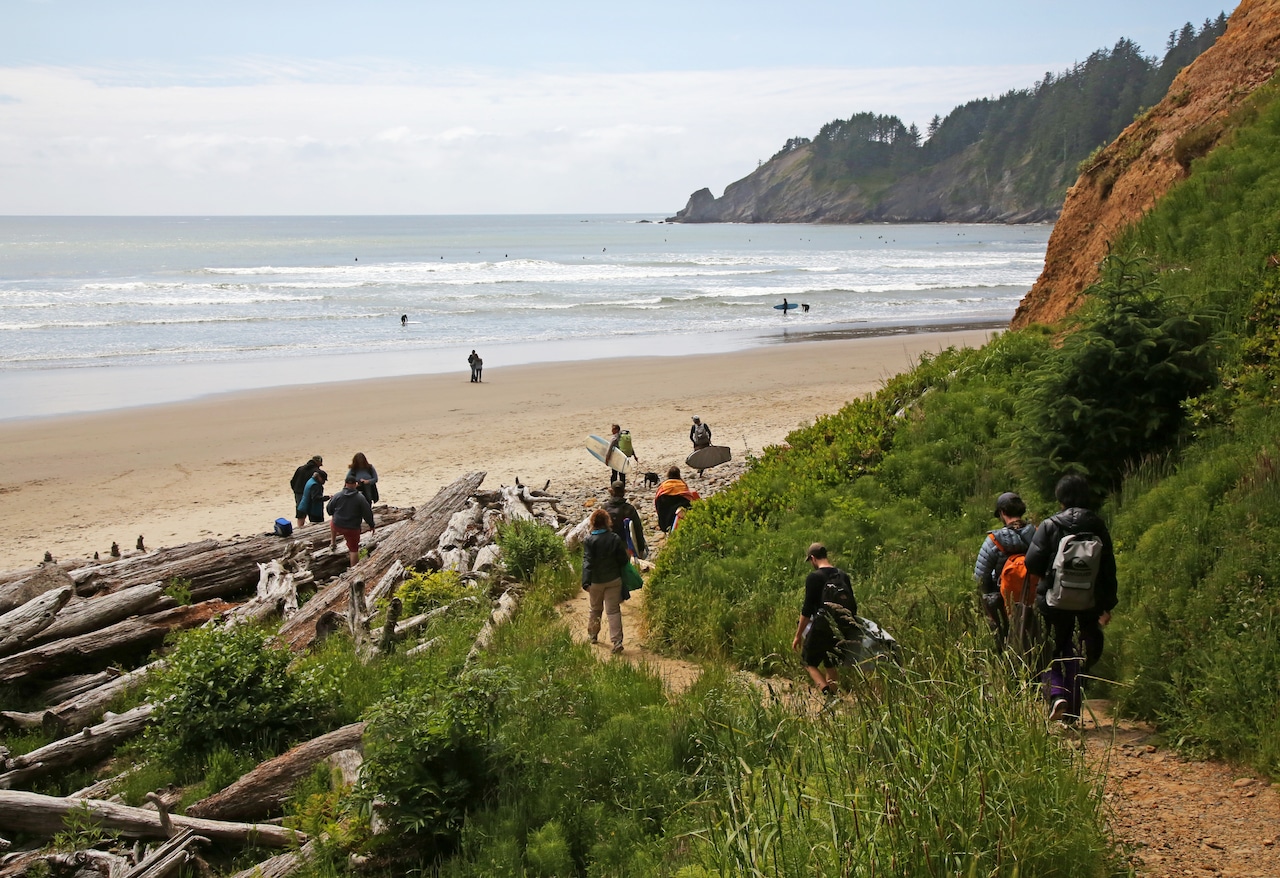
Another round of fee increases at Oregon state parks has arrived.
While parking fees at state parks increased from $5 to $10 at the start of 2025, the Oregon Parks and Recreation Department has now increased the number of parks that charge those fees, from 25 to 47, effective Oct. 1.
That includes 21 parks across the state that previously did not charge parking fees at all, and one park, Fort Stevens, that is expanding its fee area. Visitors to those 47 parks must purchase a $10 parking permit for the day or buy an annual state park pass that’s good for one or two years.
The new parking fees were announced in August, alongside an increase in camping fees that is set to begin May 1, 2026.
Here’s what you need to know about the new fees:
Which parks are now charging parking fees?
Nearly half of the 22 new parks are on the Oregon coast and include some of the busiest beach destinations in the state, such as Beverly Beach, Harris Beach and Oswald West state parks, which will all now charge parking fees. The list also includes popular parks in the Willamette Valley and Columbia River Gorge, a few around Bend and a couple in eastern Oregon.
Here’s the full list of parks:
Cline Falls State Scenic Viewpoint
Beverly Beach State Park
Bullards Beach State Park
Cape Arago State Park
Crown Point State Scenic Corridor
Dexter State Recreation Site
Face Rock State Scenic Viewpoint
Farewell Bend State Recreation Area
Fort Stevens State Park
Harris Beach State Recreation Site
Hat Rock State Park
LaPine State Park
Lewis and Clark State Recreation Site
Lowell State Recreation Site
Oswald West State Park
Prineville Reservoir State Park
South Beach State Park
Starvation Creek State Park
Sunset Bay State Park
Tolovana Beach State Recreation Site
Tryon Creek State Natural Area
Valley of the Rogue State Recreation Area
How do I pay for a parking permit?
Park visitors will need to pay for a parking fee either on site or ahead of time. Fees can be paid with credit cards at self-service kiosks, on devices by scanning QR codes posted at some of the parks, or with cash at park offices and visitor centers. Parking permits will also be available online, valid only for the date of purchase.
Do out-of-state visitors need to pay more?
Yes, a new 25% surcharge on out-of-state visitors will apply to the parking permits. State park officials have rounded down the total parking fee to $12 for nonresidents.
What happens if you don’t pay?
State park officials have said their primary goal is education, especially for the first few months, as staff and visitors learn to understand the new system. State parks spokesperson Stefanie Knowlton said enforcement will be light, for now.
“Our goal is to generate voluntary compliance at the lowest level of enforcement,” Knowlton said. “If someone forgets to pay, they may get a reminder on their windshield with an opportunity to pay via QR code or online.”
Why is Oregon State Parks adding new fees?
The Oregon Parks and Recreation Department has said that it is facing a looming budget shortfall to the tune of roughly $30 million. Several factors have played into the issue, parks director Lisa Sumption said earlier this year, including rising construction costs, pay raises for park staff, aging infrastructure and a reduction in funds.
Oregon’s state parks are not funded through tax dollars but instead receive money primarily from Oregon Lottery funds, which provide about half of the department’s revenue. Another 20% comes from parking, camping and reservation fees, with the remainder coming from smaller slices of funding such as federal grants and state RV registrations.
Sumption said the fee increases were a long time coming. Oregon’s state parks have long charged less than neighboring states, she said, and the fact that the increases met little resistance proves that people are willing to pay a little extra to experience the parks.
In 2024, the Oregon Parks and Recreation Commission gave the state parks director more flexibility in deciding which parks can charge fees and how much those fees cost.



